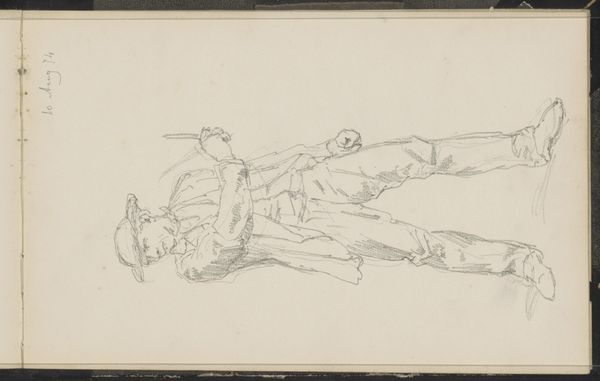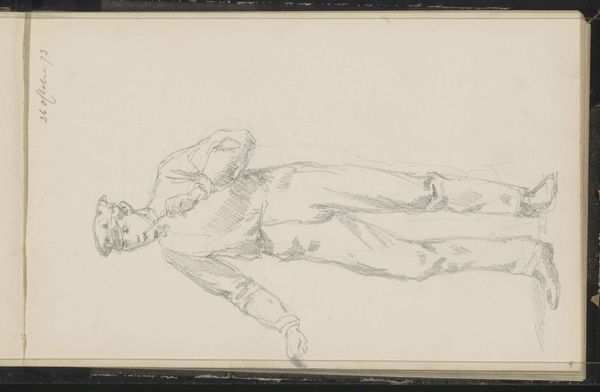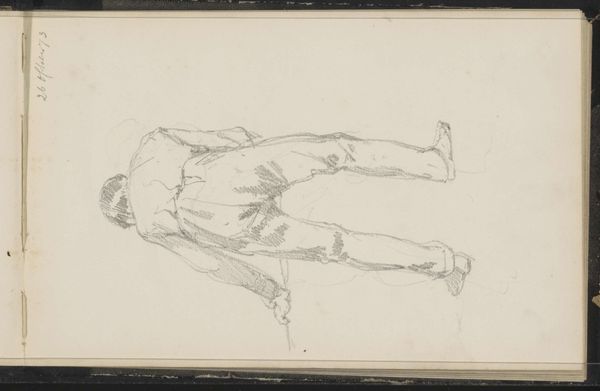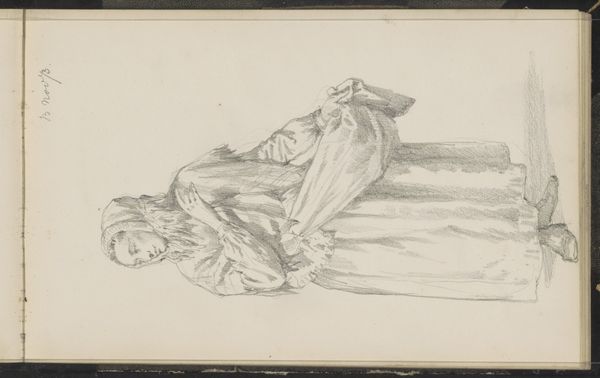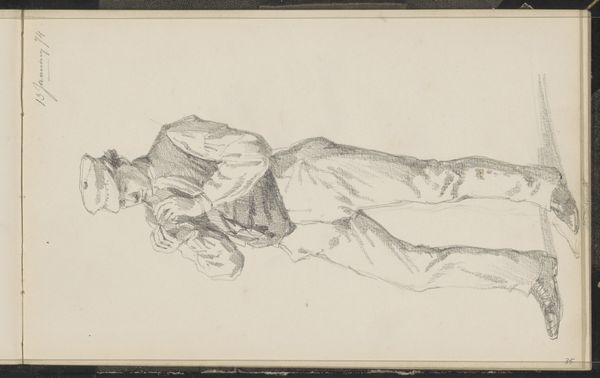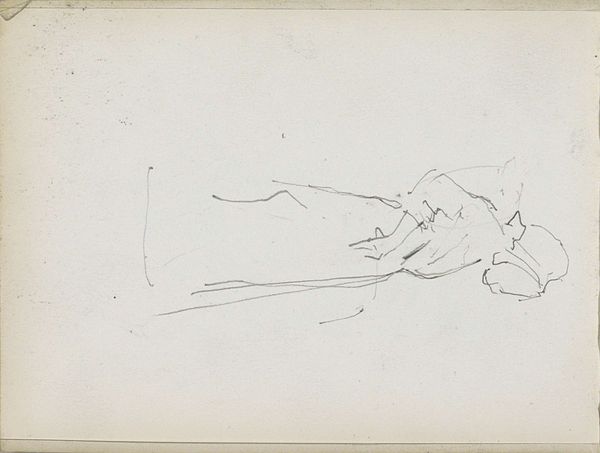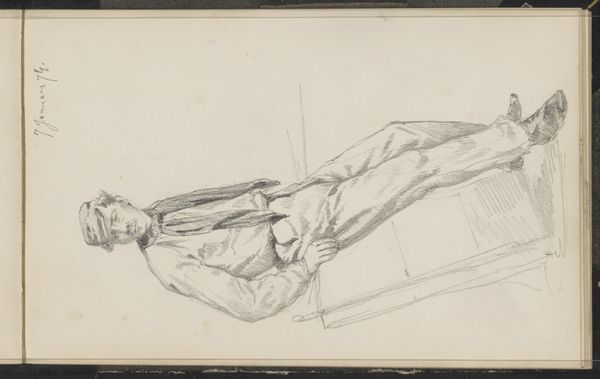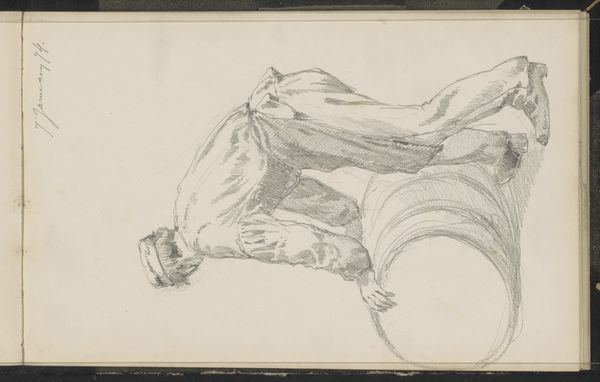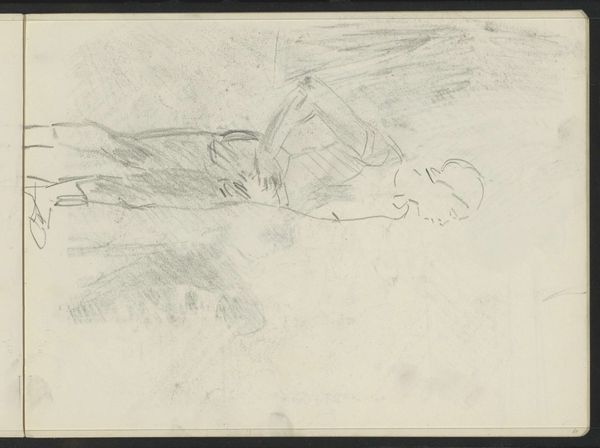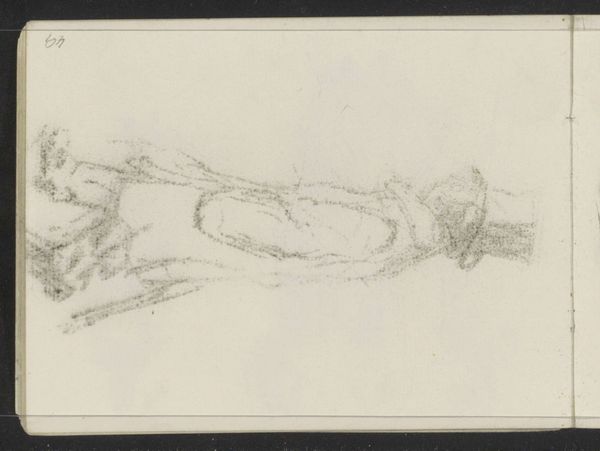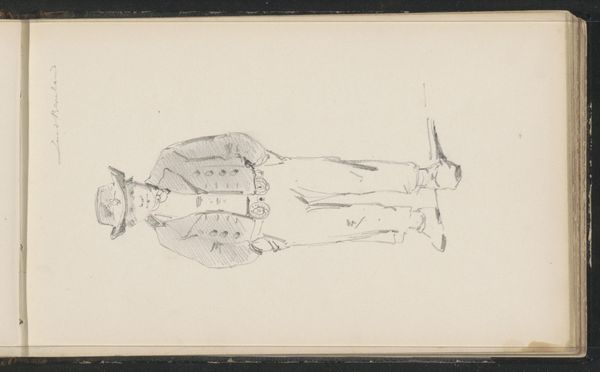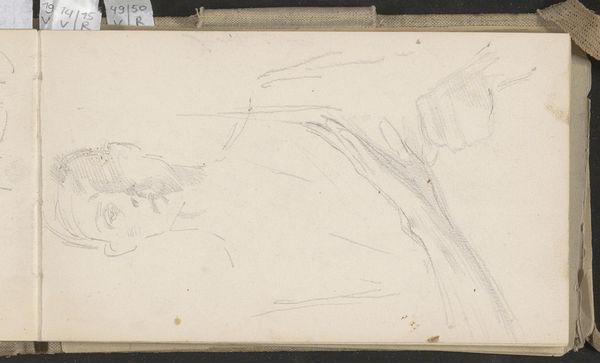
drawing, pencil
#
portrait
#
drawing
#
toned paper
#
light pencil work
#
pen sketch
#
sketch book
#
figuration
#
personal sketchbook
#
ink drawing experimentation
#
pen-ink sketch
#
pencil
#
sketchbook drawing
#
genre-painting
#
storyboard and sketchbook work
#
sketchbook art
#
realism
Copyright: Rijks Museum: Open Domain
Editor: This is "Man met een een hand in zijn zij," which translates to "Man with a Hand on his Side," possibly from 1874, by Cornelis Springer. It's a pencil drawing on toned paper currently held at the Rijksmuseum. It strikes me as a very intimate portrayal, like a candid snapshot from a sketchbook. What do you make of it? Curator: It is indeed an intimate study, and the sketchbook context is key. We're seeing Springer engage in a practice common among 19th-century artists: the creation of personal visual records. Consider the rising prominence of realism in art and literature at the time. There was growing interest in portraying everyday life and ordinary people honestly. How might this inform the drawing’s creation and purpose? Editor: I suppose the focus wasn't necessarily on idealizing the figure, but on capturing a specific moment or observation? Was it just a form of practice or preparation for something larger? Curator: Exactly! And more than just practice. Think of sketchbooks as visual diaries. Artists could explore different compositions, test ideas, and record observations free from the pressures of producing a finished work for the public eye. The seeming casualness of the pose – the man reclining – invites a degree of informality rare in the more formal portraits commissioned and exhibited. Did this work leave the sketchbook? Was it for public consumption? These aspects shift its importance and reception, even its meaning to the artist. Editor: That’s a good point, it does feel like something very private that we're seeing, even voyeuristic. I'm now thinking about how the setting and intended audience radically affect the impact of even the simplest sketch. Curator: Precisely. The museum context elevates and transforms it, placing it in conversation with broader artistic trends and social histories. By thinking about these aspects, we're analyzing how the role of institutions, display practices, and even the art market itself shapes our understanding of the image and influences its impact as more than just the fleeting representation of a random man. Editor: So, understanding the 'where' and 'why' is as important as understanding the 'what'. Thanks for giving me a lot to think about! Curator: My pleasure. The beauty of art history is how a simple sketch can reveal such a complex network of artistic intentions and cultural contexts.
Comments
No comments
Be the first to comment and join the conversation on the ultimate creative platform.
